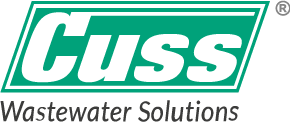Membrane bioreactor for a baby food production in Serbia
MBR-Technology
In order to discharge the wastewater from a Serbian baby food production into the local surface water bodies. CUSS designed, installed and commissioned a complete biological wastewater treatment plant.

NUMBERS & FACTS:
• Country: Syrmia region, Serbia
• Hydraulic plant capacity: 100 m³/d
• Years of construction: 2016-2018
CONCEPTUAL FORMULATION:
The newly constructed production plan a produces about 100m³ of wastewater per day. To discharge the water into the neighboring surface waters the local emission limits need to be reached and an in-house wastewater treatment plant was constructed.
Thanks to highly relevant experiences and already established local contacts, CUSS was awarded the project.
The wastewater contains high concentrations of fats and TSS. It was therefore decided to combine an intensive pretreatment with a biological membrane reactor. During the pretreatment abrasive particles and fats and oil are removed through a mechanical treatment step followed by a dissolved air flotation. The wastewater is then collected, homogenized, and neutralized in an equalization basin. The main treatment takes place in a biological membrane reactor. Before the discharge the water is collected in a clearwater tank. Excess sludge is collected in an aerobic sludge tank and then removed from the location.
The in the membrane reactor installed ultrafiltration ensures that the treated water is free from suspended solids. Depending on the produced baby food the wastewater composition might change over time. This can have a negative influence on the sludge flocculation. A membrane reactor is less susceptible to those changes. Another advantage of membrane reactors is the small footprint. Since a sedimentation basin is not needed and the reactor volume can be minimized thanks to the higher sludge loading.
The membranes need to be cleaned regularly and replaced when necessary. Therefore, attention was paid to a compact design. Replacement membrane modules can be pre-assembled, which reduces the time required to change the membranes.
WASTEWATER CONSTITUENTS:
- High TSS-concentration
- High fat-concentration
- Possibly changing wastewater composition dependent on the production
PROCESS STEPS:
- Sand and oil trap
- Dissolved air flotation
- Equalisation bassin
- Membrane bioreactor
- Clearwater tank
- Aerobic sludge tank

